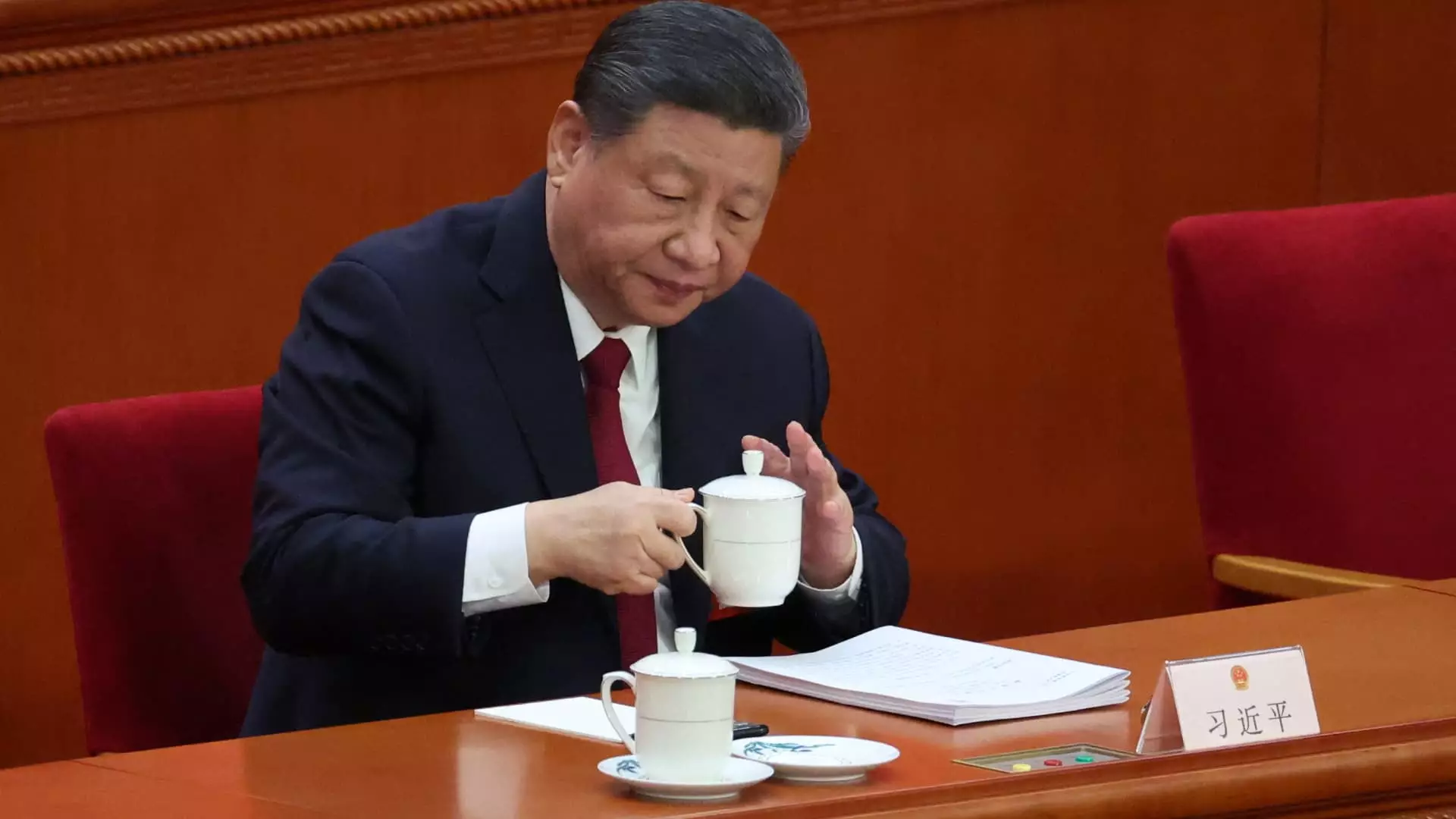As the global economic landscape shifts in the wake of rising tensions between superpowers, China finds itself at a precarious crossroads. President Xi Jinping’s recent remarks highlight the urgency for targeted measures to rescue beleaguered businesses facing mounting external pressures. The backdrop of escalating trade tensions, particularly with the United States, has escalated to a staggering situation where tariffs are soaring beyond 100%. This hostile environment severely complicates China’s ambitions for a stable economic growth rate, especially with the original target of 5% becoming increasingly elusive.
The urgency for strategic reform is evident as major financial institutions downgrade China’s GDP forecasts. This raises a critical question: can state intervention adequately compensate for the detrimental effects of international hostility? The Politburo’s focus on financial support mechanisms and interest rate reductions suggests a reactive, rather than proactive, approach. History has shown that improvising economic policies under duress rarely yields sustainable solutions. China needs to acknowledge the reality that reactive measures often come too late, and more significant structural reforms are overdue.
Going Beyond Fiscal Band-Aids
Despite calls for “multiple measures” to relieve business strain, such as reducing interest rates and adjusting reserve requirements, the underlying issue remains unaddressed: dependency on fiscal band-aids to mitigate economic woes. The recent decision to raise the deficit target to 4% of GDP in March may have been perceived as a bold move, but it highlights the limitations of fiscal policy in the face of systemic challenges.
While aid may circulate to replace external losses, it cannot rectify the deeper underlying issues that render these businesses vulnerable in the first place. It’s a stopgap solution that ignores the necessity for an innovation-driven economy that could withstand external shocks. Without embracing fundamental economic transformations—prioritizing technological advancements and genuine entrepreneurship—China may fall into the trap of temporary fixes that do not lead to long-lasting resilience.
The Illusion of Flexibility
The assurances provided by officials concerning targeted support paint an optimistic picture. However, this flexibility appears more as a rhetorical device than a practical roadmap. Zong Liang’s commentary illustrates a cautious approach that, while wise, risks being complacent. The concept of taking time to adjust to “trade shocks” echoes a larger pattern of stagnation that often plagues bureaucratic systems.
While the Politburo discusses boosting middle and lower-income consumption, it remains unclear how these objectives will be actualized in specific policy frameworks. Often, lofty ideals can obscure the need for immediate and tangible actions. Thus, the sentiment of sticking to previous policies risks paling in comparison to the urgent need for fresh, actionable initiatives that cultivate real economic stamina.
The Riddle of Local Government Initiatives
As local Chinese governments scramble to compensate for disrupted export markets by redirecting products to domestic avenues, this raises concerns about long-term sustainability. While immediate shifts in focus can provide temporary relief, they fail to solve the problem at its core. Businesses cannot endlessly pivot toward domestic markets without facing diminishing returns. The core of the Chinese economy must evolve beyond mere reactivity’s safety net into a transformative model that prioritizes resilience, adaptability, and innovation.
The push for technology development, particularly in artificial intelligence, reflects a recognition that the future of economic progress lies in modernization. However, the ambiguous transition from ideological rhetoric to concrete implementation remains a gargantuan challenge. China’s leaders must grapple with the urgent question of how they will cultivate an ecosystem that not only embraces technology but also democratizes access across varying socioeconomic strata.
The True Cost of Business Uncertainty
As anticipation builds around forthcoming legislation to support the private sector, one can only hope that the endeavor does not morph into a bureaucratic labyrinth stripping away entrepreneurial spirit. The National People’s Congress is poised to review new laws designed to uplift the private sector; however, any hesitation based on earlier hesitations could deflate optimism. The potential pitfalls are significant—excessive regulation or red tape could ultimately suppress the vitality that a genuine competitive landscape otherwise fosters.
The complexities surrounding government-business interactions underscore the need for a balanced regulatory approach that empowers, rather than constrains. Transitioning toward a sustainable economic model demands a clear-eyed view of not just local reactions, but expansive, systemic changes, ensuring that both state and private sectors can coexist and thrive amidst increasing global uncertainty.
In a world marked by economic upheaval, China stands at a pivotal moment. The choices made in the coming months could potentially reshape the trajectory of China’s economy and its role on the world stage, emphasizing the vital importance of proactive policies rooted in adaptability and innovation, rather than reactive measures tethered to the past.

